Introducing the Best of CES 2017 finalists!
Here's our list of nominees for all 15 categories.

Most of our editors eschewed the typical New Year's Eve celebrations and arrived in Las Vegas on New Year's Day. One of us even arrived on December 31st and spent the last few hours of 2016 in bed. All of that just to give our all to the annual tradition that is CES. We spent the past few days walking the show floor, attending evening events and covering press conferences to bring you the very best from CES 2017. And now, we're ready to unveil the finalists for our annual Best of CES awards.
Below you'll find our selections for 15 categories, which range from accessibility tech to wearables. We'll announce our category winners tomorrow, which is also when we'll reveal the recipient of our Best of the Best award, the most coveted prize of them all. That special award is selected from our pool of category winners.
If you want your voice heard too -- and who doesn't? -- there's an additional category for People's Choice, where you can vote for your favorite entry in our compilation of finalists. Just head on over to our poll right here to cast your ballot. All award winners will be announced at a special ceremony tomorrow at our CES stage, so be sure to come back right here on Engadget around 5PM PT / 8PM ET Saturday to watch it all unfold.
Best Accessibility Tech
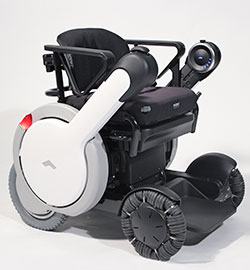 Wheelchairs have seen few improvements over the last decade. Whill, however, is an all-terrain wheelchair that navigates different surfaces with ease. The latest Model M is a powered vehicle with patented omni-wheel technology that keeps the wheelchair stable over obstacles and rough terrain. The maneuverability, coupled with the compact design, allows people with disabilities to navigate both uneven and small spaces comfortably. The FDA-approved machine has three speed modes plus a stationary one so it doesn't slide or move in case someone knocks into it. |  The smartcane, from French startup Nov'in, has movement sensors and an alert system that connects directly to the GSM network. In case of a fall or emergency, the cane can be used to send an alert to a caregiver, who can respond with a signal so the cane user knows help is on the way. An accompanying app uses algorithms to learn the user's habits and movements based on data collected from the cane. It then uses that information to deduce low activity, tiredness and other changes in walking patterns that could signal the user's deteriorating condition. |
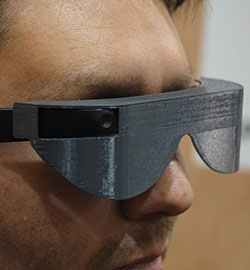 Aira is a service for the blind and visually impaired. But instead of helping someone "see," it basically communicates to an Aira agent, who will act as an extra set of eyes. One can use either a pair of smart glasses or just a phone's camera for it to work. The company promises that this will help blind people do everything from grocery shopping to calling an Uber. |
Best Startup
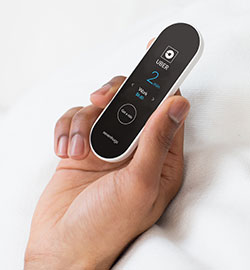 Most "universal" remotes are still limited in the number of devices that they can control. However, the Smart Remote from Sevenhugs will work on just about anything. Literally anything. This remote is packed with internal position sensors and transmits via WiFi, Bluetooth and infrared. A slew of third-party APIs allow it to control not just your home theater system but also everything from your Hue lights and Nest thermostat to smart kitchen appliances and home IoT devices. It can even interact with real-world objects: Point it at a window to get real-time weather updates, or point it at the front door to order an Uber. | 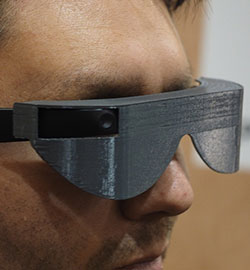 Although visually impaired folks have little difficulty leading normal, productive lives, they occasionally need help with some tasks, like making shopping lists or reading restaurant menus. For times like these, Aira is there to help. The system uses a video feed from smart glasses or a phone's camera to connect the user with an Aira agent who sees what they see and can help guide the user through their task in real time. The video feed isn't constant, mind you; it's designed to act more as an on-demand assistant rather than a replacement of the user's existing assistance systems. |
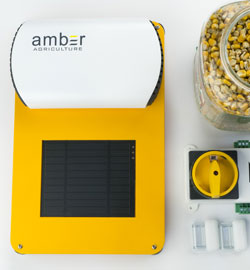 You've heard of the smart home, but what about the smart farm? Amber Agriculture has developer sensors and a monitoring system for grain silos, allowing farmers to remotely track the moisture and quality of their stored crops. A few days of high humidity could hit a farmer's wallet hard, so having this kind of intelligence could really help business boom. Beyond that, there's also potential to help solve spoilage problems around the world. | 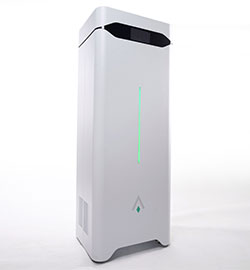 Forget noisy, gross diesel generators -- Ampd Energy has cooked up an array of batteries called a silo meant to act like a power bank when a building's power goes out. It's incredibly quick to switch on (great for hospitals and other sites where power is critical) and it shouldn't require any maintenance, as it constantly monitors its internal systems. Curiously, it also happens to look very sleek, but the design wasn't just meant to score style points: It's also about keeping everything compact and easy to manage. |
Best Digital Health and Fitness Product
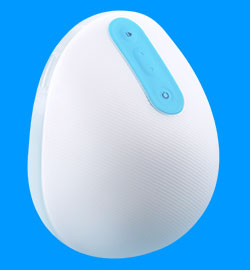 Breast pumps have traditionally been hefty, requiring a woman to be tethered to a wall outlet -- an inconvenience for busy moms. Willow's bra-worn smart breast pump is designed to be used on the go, saving valuable time and freeing them from having a dedicated pumping session. In addition, the device can calculate the volume of milk that's been expressed, enabling parents to keep track of their little one's nutrition. |  Flow isn't like most wearables. The device tracks nearby air quality to help you avoid pollution, including dust, exhaust fumes and other dangerous gases. What's more, it looks sleek and comes with a strap, which can be attached to your backpack or pants' belt loops. It could be useful for your next trip to a big city. |
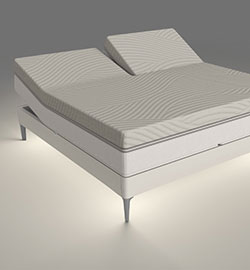 If anything is certain in life, it's that you need great sleep to be happy. With its 360 smart bed, Sleep Number promises to make your nights (and days) more comfortable. The bed auto-adjusts as you toss and turn in your sleep, using your every movement to contour itself to your body. And in case you're a snorer, the 360 smart bed features a flexible base that kindle tilts your head upwards as you're asleep. Let's just hope it doesn't cost too much when it launches later this year. | 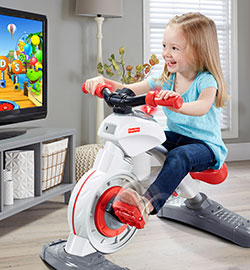 We see you there, rolling your eyes about millennial kids and their refusal to play outside. But if you live in Alaska and it's the winter and you want your rugrats to work out, this could actually be useful. Not to mention, kids can play educational games that will help them learn STEM subjects. |
Best Wearable
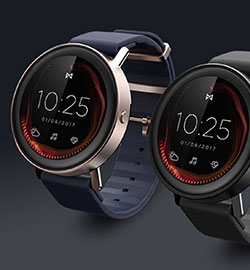 As Misfit's first touchscreen smartwatch, the Vapor promises to offer a compelling combination of a user-friendly interface and the company's existing fitness-tracking features. But it's the watch's addition of built-in GPS and heart-rate tracking that excites us. This is a watch that has expanded its activity monitoring features while adding some smartwatch-like tools such as notifications and music playback control -- all for a reasonable $199. Plus, it doesn't hurt that the Vapor looks pretty -- something we can't say about every wearable that's crossed our reviews desk. | 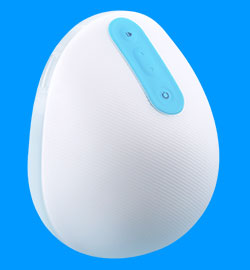 Smart breast pumps aren't necessarily novel, but Willow stands out for being one that moms can slip inside their nursing bras. The device is a pair of motorized cups that relieves women from having to hold up a gadget while pumping. It also keeps them from being tethered to a wall outlet. It's easy to use too: Just push a button to start pumping, and press the up or down keys to adjust intensity. Willow also tracks the amount of milk being collected in its included disposable bags and sends that data to a companion app, so caregivers can better understand how much they have to feed their babies. At $429, these aren't cheap, but they could be a gift to busy moms who need more time to themselves. |
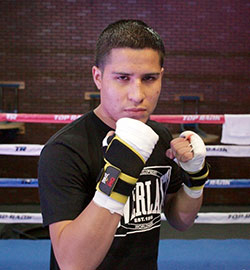 There are plenty of activity trackers for golf, tennis and many other sports, but what about boxing? Everlast and PIQ have teamed up to attach a motion sensor to a boxing glove to track your face-punching. That data is then crunched to tell you the type of punch, impact and force that you produce during your sparring sessions. You can then post it to social media -- you know, to warn your Facebook friends not to mess with you on a night out. | 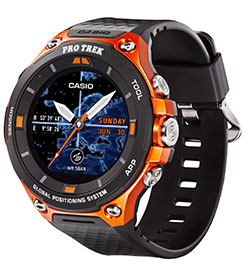 The fact that the Casio WSD-F20 is one of the first smartwatches to run Android Wear 2.0 is nice, but it's the device's built-in low-power GPS and offline maps in color that have us paying closer attention. The rugged watch has new button guards and a protective bezel that make it hardier than its predecessor, which is important for its target audience. It may be pricier than a typical Android Wear watch, but the Casio WSD-F20 offers enough differentiating features to justify that premium, at least for outdoor enthusiasts. |
Best Automotive Technology
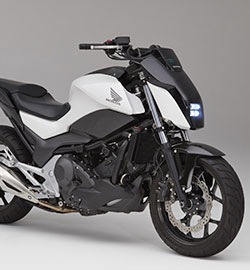 Keeping a motorcycle upright at high speeds is simple: Mostly you just have to hang on. Yet, when a bike is slowly cruising through a parking lot, in traffic, or at a stop, it's up to the driver to maintain their balance. That can be difficult on larger, heavier cycles like cruisers. Honda is trying to make those types of low-stability situations easier with its new Riding Assist technology, a system that keeps a bike upright even without an actual rider. It's an impressive feat considering the company isn't using gyroscopes but instead is utilizing research it gleamed from the UniCub. | 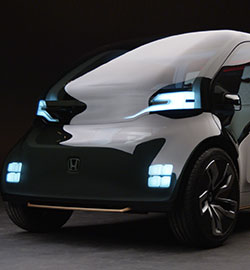 The future of driving is full of electric motors, autonomous vehicles and AI. All of those are great when you're stuck in traffic and want to lower your carbon footprint. But when it comes down to it, there are people out there who still like to drive, and Honda's NeuV concept keeps those folks in mind while looking into the next decade. Whether you or a robot is controlling the vehicle, the car's Emotion Engine AI is there to be your automated friend. |
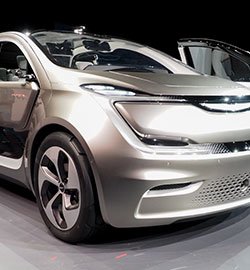 The connected generation is eventually going to have kids. That's where Chrysler's tiny minivan of the future comes in. The electric vehicle has three rows of seating, but any of the rear seats can be removed for storage when you're not chauffeuring other folks around. It also sports a fold-down display, an intercom so the driver can talk to the passengers in the back, and -- for social media addicts -- a selfie cam that gets everyone in the picture. | 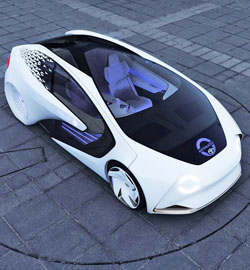 A car designed by millennials for millennials. Yeah, it sounds a bit ridiculous, but the car itself is a reminder that while the the future of driving isn't just SUVs. Instead the tiny four-seater with its gullwing doors is a sporty-looking design masterpiece that's done away with all the large, black rectangular slabs and instead the white interior becomes a display when important information needs to be shared and a moment before. Maybe those millennials are on to something? |
Best Home Theater Product
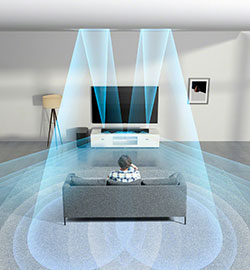 Sony's flagship soundbar for 2017 doubles as an audio hub for your living room. It packs a ton of ports as well as Bluetooth for wireless pairing with your phone. If you like voice controls, the HT-ST5000 plays nice with Google Home so you can use Google Assistant to situate the Dolby Atmos sound. | 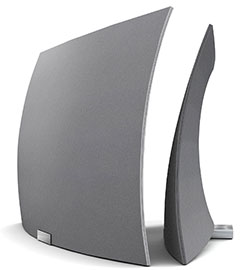 Mohu seeks to rid OTA antenna users of that unsightly cord that runs up the wall to most TV accessories. Mohu instead connects to your television over WiFi to provide access to all of the channels you're able to receive for free. |
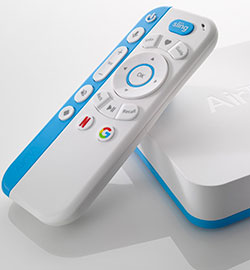 The AirTV is a $99 set-top box that offers access to Sling TV, Netflix and Android TV. With a $35 add-on, the device can connect to your OTA antenna for local content you get for free. It also features a well-designed universal guide that organizes all of those content sources. | 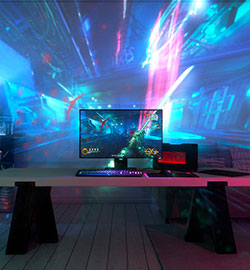 Razer Project Ariana (projector) Razer's Project Ariana is an extension of the gaming company's Chroma lighting. Rather than just lighting up a keyboard, this is a 4K projector that expands your game outside of a monitor. It also acts as a regular projector, but thanks to its on-board cameras, it can adjust the picture to account for furniture and other objects that would usually warp images. |
Best Connected Home Product
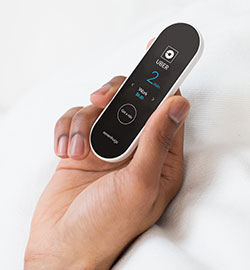 Sevenhugs' Smart Remote is a truly universal remote. In addition to handling your home theater setup, it can also manage your smart home, controlling thermostats, lights, Sonos speakers, and nearly 25,000 other connected devices. It does all this with a combination of infrared, WiFi, Bluetooth, position sensors and some API smarts. You can even set it to order you an Uber just by pointing it at your front door. | 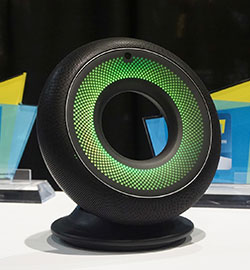 Emotech Olly Machine Learning Assistant There have been a lot of Amazon Echo-like personal assistants here at CES, but Emotech's Olly is a little different. It uses machine learning to adjust its behavior based on your personality. If you're a bubbly person, Olly will spin around and talk with pep. If you're more serious, Olly will be too. It's this intelligent use of AI that sets Emotech's latest apart. | |
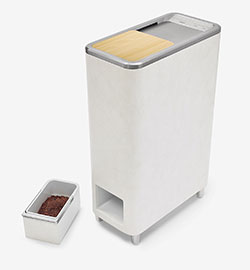 Zera Food Recycler by WLabs of Whirlpool Corporation Whirlpool's Zera Food Recycler is a new kitchen appliance that turns your food scraps into rich fertilizer with hardly any work on your part at all. Plug it in, throw your food into the chute along with an odor-killing additive, and after a week you'll have some plant food. | 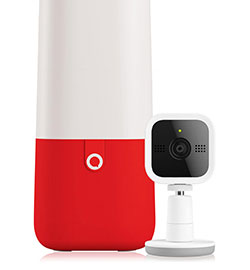 Mattel's Aristotle is like an Amazon Echo but for children. Rather than ordering food or hailing an Uber, though, Aristotle is more like a tutor that grows with your kids. It starts out as a baby monitor. Later on, it can read stories or even help with homework. There are also some cool features to help your kid grow, like asking Aristotle to speak a foreign language for an hour each day, or programming it to only respond if your kid minds their Ps and Qs. |
Best Innovation (Disruptive Tech)
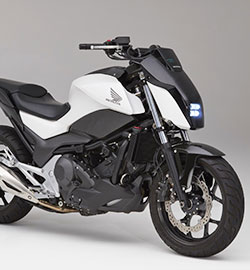 A motorcycle that can balance itself? It's one of those feats of technology that looks like magic but is actually real. Honda has built tech that helps motorcycles stay upright, regardless of whether there's a rider onboard. Obviously, the more important application here will be making it less likely that riders tip over, but it's also pretty cool to see a motorcycle standing up in a parking lot on its own. The days of the humble kickstand may be numbered. | 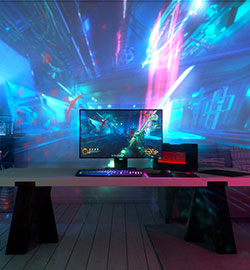 For years, gaming tech has sought to make games more realistic and immersive. Razer's Project Ariana project ratchets up the immersion factor by turning your living room into something resembling a drive-in theater -- except instead of watching a movie, you're playing a game. The projector expands the viewable area of a game to show you everything on the periphery that isn't normally seen on-screen. It's kind of like watching an IMAX movie. You'll need to have a large blank wall to really take advantage of it, but if you do this will be a serious upgrade to your gaming cave. |
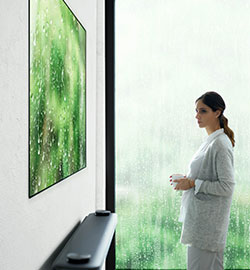 Yes, every year at CES TVs get thinner. But this year, LG revealed a massive, beautiful television as thin as three stacked quarters. It's even slimmer than your iPhone. Beyond the impressive feat of engineering, this TV could eventually change the way we set up our living rooms. For years, bigger and bigger screens have become dominating centerpieces of the living room. A TV that disappears into your wall could go a long way toward making our living spaces less TV-centric. |
Best Mobile Device
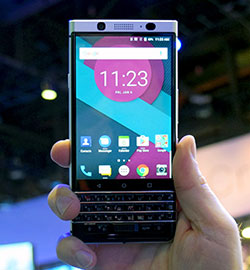 When TCL announced it was in change of the future of BlackBerry hardware, some were concerned. Based on the reaction to this 'Mercury' prototype, though, TCL might actually be onto something. While most of the specs are being withheld for now, the physical keyboard is back (complete with touch sensitivity and a fingerprint sensor) and the camera performs way better than we expected. Wrap all of that in a sturdy, handsome aluminum frame and it's starting to look like BlackBerry might be back. | 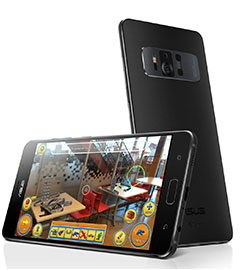 Google's Tango technology has been in the works for a long time, but we didn't love the first phone that made use of this tech. The second Tango phone, ASUS' ZenFone AR, addresses most of our biggest concerns. It's actually pocketable, for one, and packs a high-end Snapdragon chipset, along with a whopping 8GB of RAM. It's more than just an AR machine too: It also supports Google's Daydream VR platform. |
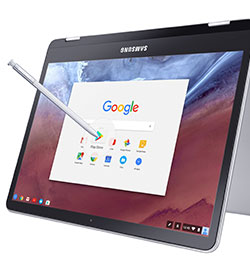 Samsung's Chromebook Plus is an impressive Chrome OS machine with stylus support and access to the Google Play Store for Android apps -- both firsts for the platform. And for those of you wondering why this is here, well, look at it this way: It's a mobile device in the same way that an iPad Pro is (similar OS and processor). | 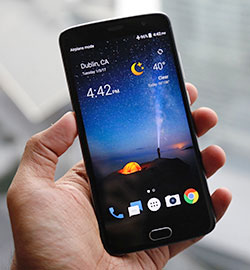 ZTE's Blade line of smartphones is well-known abroad, but the company is finally bringing it to the US with the Blade V8 Pro. More importantly, it packs plenty of goodies, considering its $230 price. There's a bright 5.5-inch full HD display, for starters, along with a solid body that feels better than other mid-range phones we've seen at the show. It also rocks a surprisingly good dual camera setup. Who says every important phone has to be pricey? |
Best TV Product
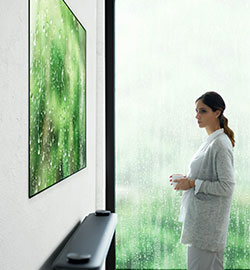 Last year's winner is back and better than ever. The W-Series OLED is so skinny it mounts flush to the wall with magnets, looking more like a piece of art than a TV. That's thanks to an innovative design that pushes its electronics into an Atmos-capable soundbar connected by a thin cable. This year's TV is better, brighter and brings support for emerging HDR tech like Hybrid-Log Gamma and Advanced HDR, making it even harder to beat. | 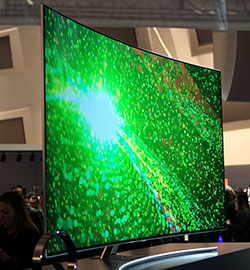 To compete with OLED technology, Samsung has new metal quantum dots that make its TVs look stunning. Dubbed QLED, it can pump up the brightness without losing its ability to display color. Additionally, the Invisible Connection fiber cable-to-breakout box and embedded zero-gap hinge mean it's not just beautiful; it's also easy to install. |
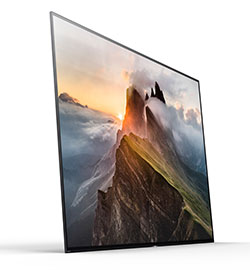 It's easy to forget that Sony had OLED TVs years ago, before it ultimately ditched the technology. In that regard, the XBR-A1E marks a triumphant return. It combines impressive video quality and Sony's advanced video processing with an "Acoustic Surface" display that emits sound directly from the screen itself. A subwoofer tucked away in its stand helps fill out the sound while cutting out any distractions from the amazing picture quality. | 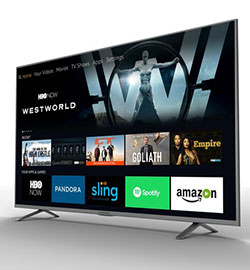 The Fire TV platform started in a box, was later shrunken down to a stick, and now someone finally squeezed it directly into a flat-screen TV. Amazon and Chinese manufacturers are bringing the TVs to market under three brands: Westinghouse, Element and Seiki. No matter which name is on the box, you can expect a guide that blends OTA and streaming video, Alexa-powered voice control and, of course, apps. |
Best Gaming Product
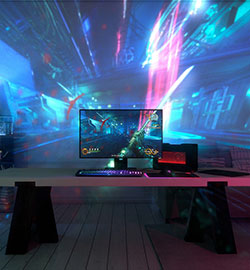 Razer's Project Ariana is an extension of the gaming company's Chroma lighting setup. Rather than just brightening up a keyboard, this 4K projector expands your game outside of a monitor. It's pretty trippy, and unlike Microsoft's similar IllumiRoom concept, Ariana will hopefully be a shipping product by year's end. | 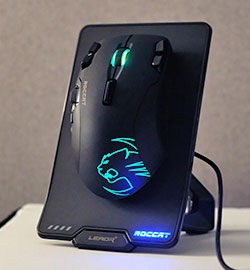 Roccat's latest wireless gaming mouse is its lowest-latency model yet, offering zero lag and complete 1:1 accuracy between your movements and the action on-screen. The Leadr comes with a stylish upright charging dock, as well as a cable that can charge the mouse while you continue playing. Plus, it has an extra joystick on the inside of the mouse that can be used to scroll or increase throttle in racing games. Sorry, folks: The days of blaming poor gameplay on your wireless mouse are over. |
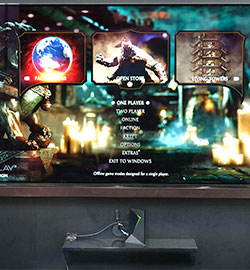 NVIDIA GeForce Now for Mac and PCs NVIDIA GeForce Now is a game streaming service that lets you rent a virtual gaming PC to play your games on the move. It lets you play any game you own on something as weak as a MacBook Air, for a price. | 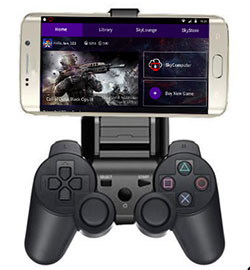 What if every video game was free-to-play? That's the pitch from LiquidSky, a game-streaming company that announced a Spotify-style free tier here at CES. In the coming months, gamers will be able to watch one to five minutes of advertising to play PC games for an hour on any hardware. People can also do this to augment their paid plans with more playtime. It's a potential game-changer for those of us who can't afford a high-end PC. |
Best Offbeat Product
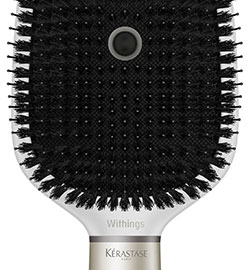 Everything has to have sensors these days, including hairbrushes, apparently. Withings and L'Oreal teamed up this year to bring us the Kérastase Hair Coach, a comb that tracks your brushing technique with a built-in gyroscope. The handle will vibrate if you start pulling too hard, and a conductivity sensor can tell if your hair is too wet or dry. All of the data is fed into a smartphone app that doles out advice based on your brushing habits. Overkill? Absolutely, but it's ridiculous enough to warrant a place on our list. | 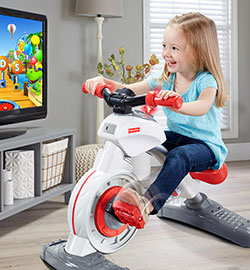 At first blush, the Smart Cycle seems absurd. An exercise bike for kids? Is this what society has come to? But hold on a second. The device could be useful when the weather takes a turn and your little ones are trapped inside for hours on end. Instead of running rampant in the living room, they can hop on this machine and play a game displayed on a companion tablet. The pre-loaded apps are also educational, promoting literacy and other skills. Yes, it's sort of like a spin class for kids, and while that might sound depressing it could actually improve their health. |
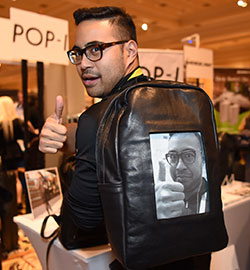 The clothes may make the man but what about his backpack? Well, if it's the the newest creation from Pop-I, it can say anything you want it to. The company has embedded a flexible 10-inch e-ink display into the rear panel, which, when paired with your smartphone, will display any image you desire -- whether it's a preloaded Pop-I pattern design or a photo from your camera roll. On top of the image itself, the user can add doodles and stickers, Snapchat-style. The bags are still in the prototype stage, but if the buzz around the Engadget trailer is any indication, they can't arrive soon enough. | 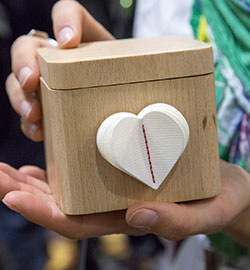 Flirting over the phone is all well and good, but there's little room for romance in the era of dick pics. Enter the Lovebox. This WiFi-connected device allows you to send text message-length love letters to your better half anywhere in the world. Whenever the Lovebox receives an epistle, the heart on its front cover will spin to alert you. Opening the top of the box reveals a small dot matrix embedded into a mirror that displays both your lover's missive and reflects your own face back to you. |
Best Maker-Friendly Technology
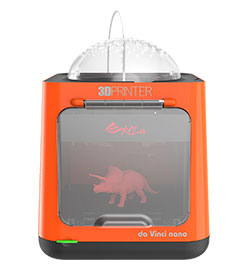 Full-fledged 3D printers don't come cheap, but that's not the case for XYZprinting's da Vinci Nano. This portable machine costs just $230 and, despite its low cost, doesn't make many compromises. There's auto-calibration and auto-leveling, which should make it easy to deal with your PLA filament prints. It's also being pitched as a plug-and-play 3D printer, meaning you don't have to download any drivers to get it up and running with your Windows 10 PC. | 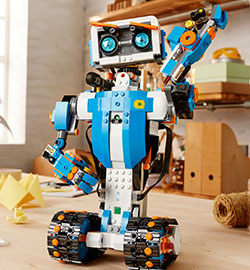 Lego creations are about to get way more fun. Priced at $160 per set, the new Lego Boost teaches your kids how to bring their building blocks to life with code. Thanks to a mix of sensors and motors, the Lego creation can be programmed with an app to follow different commands, like moving or rolling around depending on what you're building. There are five different models, including a cat and a guitar. The Boost will be available in August. |
Best PC
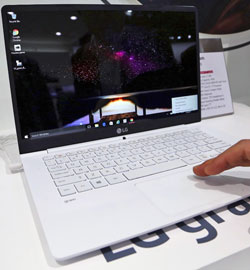 Who doesn't want an ultra-light PC with crazy long battery life? LG's Gram 14 clocks in at just 2.13 pounds and reportedly gets around 17 hours of battery life. Even with its mostly plastic build, it's also a stylish machine that will appeal to many. | 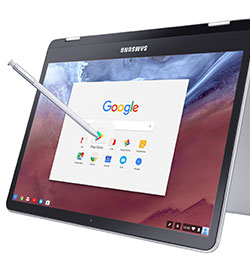 Of the two new Chromebooks that Samsung unveiled at CES, the more powerful Pro version is the most intriguing. As the first Chromebooks to come with the Google Play Store onboard, Samsung's new laptops promise to be more useful than other Chrome OS devices. The Pro uses an Intel Core M3 processor and promises eight hours of runtime, which should translate to strong performance. It also has a touchscreen, making it all the better for using Android apps, but Samsung also made this display stylus-friendly. To top it all off, this is one of the best-looking Chromebooks we've seen. |
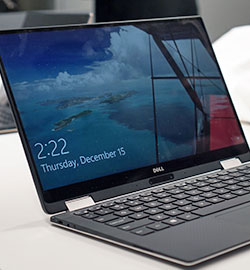 We loved the past few Dell XPS 13 models, so it's no surprise we found a lot to like about the 2-in-1 convertible version, announced this week. It's sleek and well-built, has a great screen and, most importantly, you can fold it over into tent mode for some serious binge watching. | 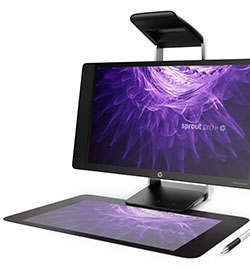 This year's update to HP's unique Sprout all-in-one may have mostly been incremental, but the improvements make for a more powerful and useful device. The new quick 3D-capture feature makes it easy for users to scan real-world objects into the computer just by rotating them in front of the Sprout's computer, resulting in digital models that you can later manipulate with your hands. HP also created new software that adds functionality to the system, and the redesigned stylus now supports 2,048 levels of pressure sensitivity for more precise drawings. The Sprout series also continues to be one-of-a-kind in the PC world since the original debuted in 2014. There's still nothing quite like it. |
Best Robot or Drone
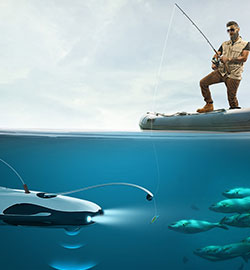 PowerRay underwater fishing robot PowerRay is an underwater drone for fishing that's able to dive to around 100 feet. Equipped with sonar, PowerRay can detect fish at distances of up to 120 feet beneath it and lure them in with a special fish-attracting light. Should the day's potential catch still prove to be elusive, PowerRay has a remote-controlled bait-drop system that should do the trick. For the pilots up on deck, there's WiFi connectivity and a real-time video feed from the onboard 4K camera of what's going on down below. For the real high-tech angler, that video feed can also be viewed in, and controlled by, VR goggles. | 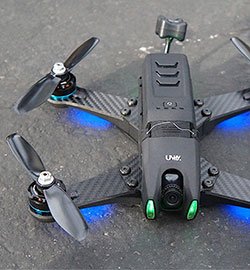 Ever watched drone racing and thought that it looked like a lot of fun? It is -- if you have the skills and patience to figure out how to build one. That's a big hurdle for many people, and it's something UVify wants to fix. The company's Draco racing drones are ready to fly and come with easy flying modes so new pilots won't have such a steep learning curve. Should you take a few knocks while you're learning how to fly, no problem. Draco has replaceable parts that simply clip into place. |
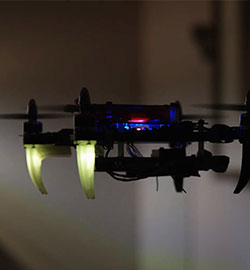 Drones are designed to be put to work. Alarm.com is doing just that with a machine learning algorithm called the Insights Engine that works with monitors and sensors placed around your property. If the system identifies any unexpected events -- say, a break-in or a water leak -- it will deploy a swarm of autonomous UAVs built on Qualcomm's Snapdragon Flight drone platform to investigate. | 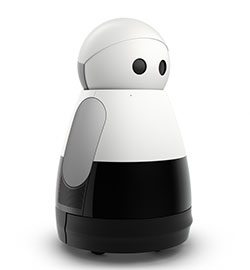 If you mashed together Amazon's Alexa, a Roomba and Pepper the robot, you'd end up with something a bit like Kuri. This 'bot learns the layout of your house -- even which room belongs to whom -- just like your smart vacuum cleaner. Its cute eyes double as cameras for video and photos, meaning he or she (Kuri's gender is up to you) can learn its adopted family's faces or act as the world's cutest security camera. Lastly, a robot isn't a robot these days unless it hooks into the modern smart home; as it happens, Kuri has that covered too. |
Click here to catch up on the latest news from CES 2017.

